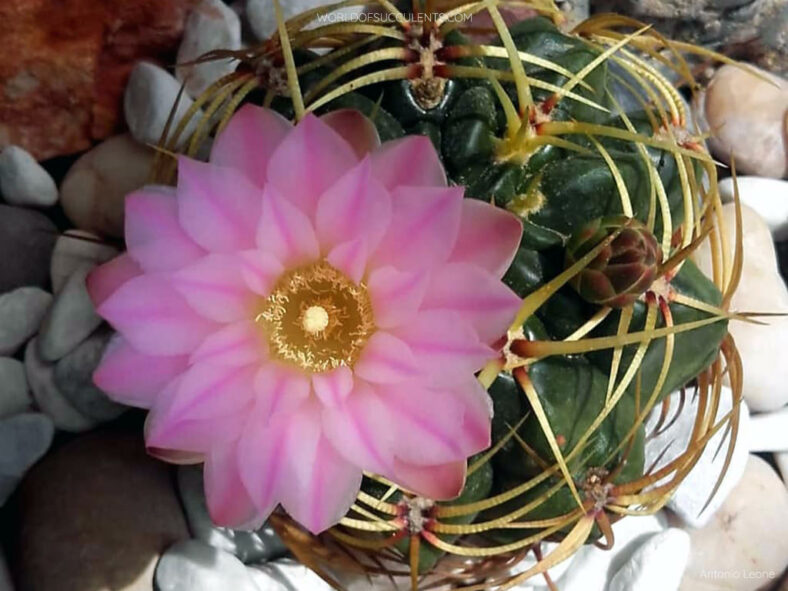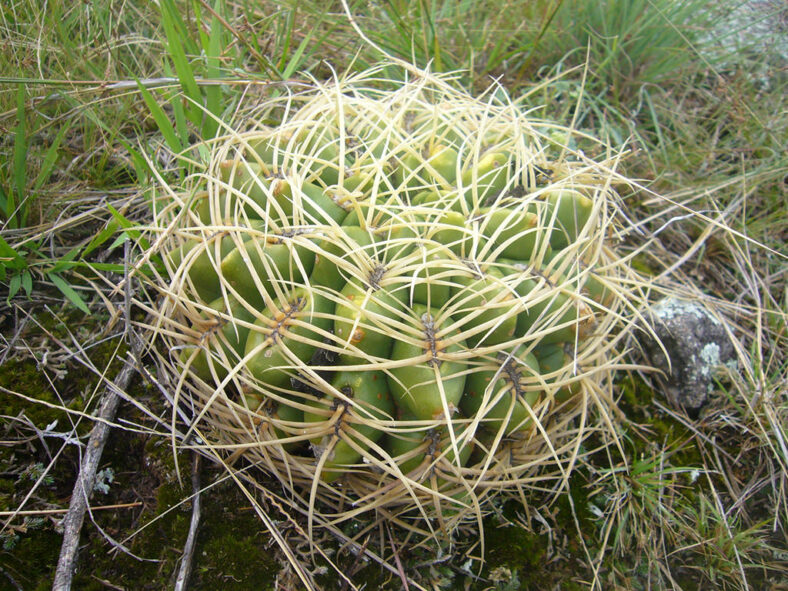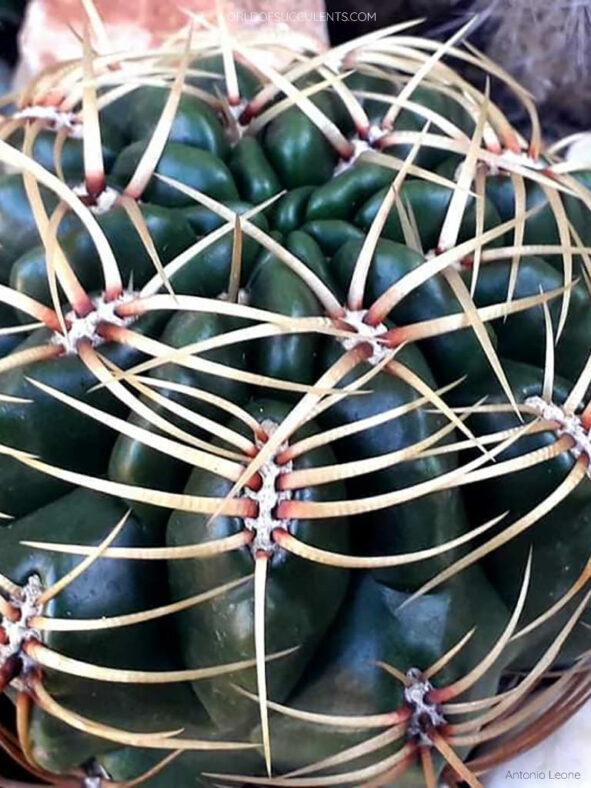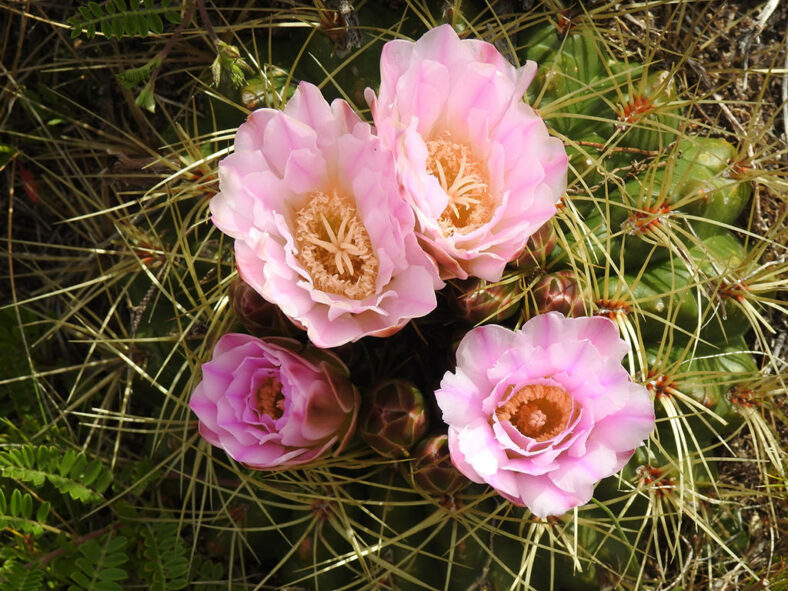Scientific Name
Gymnocalycium monvillei (Lem.) Pfeiff. ex Britton & Rose
Synonym(s)
Echinocactus monvillei, Gymnocalycium monvillei subsp. monvillei
Scientific Classification
Family: Cactaceae
Subfamily: Cactoideae
Tribe: Trichocereeae
Genus: Gymnocalycium
Etymology
The specific epithet "monvillei (pronounced mon-VIL-ee-eye)" honors Chevalier de Monville (1794-1863), a French botanist and plant collector.
Origin
Gymnocalycium monvillei is native to northwestern Argentina. It grows in grasslands in the Córdoba and San Luis provinces at elevations between 1,640 and 8,860 feet (500 and 2,700 m).
Description
Gymnocalycium monvillei is a small, slow-growing cactus with a spherical to flattened spherical stem with 10 to 20 somewhat tubercled ribs and clusters of long, stiff spines. The stem can reach a height of 3.2 inches (8 cm) and a diameter of 8 inches (20 cm) and usually grows solitary or sometimes produces few offsets, forming a small clump over time. The woolly areoles are elliptical and can measure up to 0.4 inches (1 cm) long. The spines are yellow with a reddish base and often translucent. They are spreading and somewhat adpressed towards the stem and can grow up to 1.6 inches (4 cm) long. Each areole bears 5 to 12 radial spines. The central spines are usually absent.
The funnel-shaped flowers appear in summer from the areoles near the apex of the stem. They are pink or white with a pink tinge and can reach up to 3.2 inches (8 cm) long and nearly equal in diameter. The fruits are spherical, up to 0.8 inches (2 cm) in diameter, and initially green, becoming yellowish as they ripen.

How to Grow and Care for Gymnocalycium monvillei
Light: This cactus needs light shading from the sun in the hottest months, but overdoing this will result in the loss of flowers.
Soil: The balance of the potting mix should allow good drainage so that G. monvillei does not sit in soggy soil for more than a day or two after watering. You can use a commercial cactus potting mix or create your own.
Temperature: This cactus is heat tolerant but is not a cold-hardy plant, and if there is a risk of freezing temperatures, it must be brought indoors. G. monvillei can withstand temperatures as low as 25 °F (-3.9 °C). USDA Plant Hardiness Zones 9b to 11b, 25 to 50 °F (-3.9 to 10 °C).
Watering: Watering during the growing season, from spring to fall, can be frequent, but always allow the soil to dry out nearly before rewatering. Cut back on the water during winter as G. monvillei becomes dormant.
Fertilizing: G. monvillei does not need much fertilizing, but giving it some extra nutrients occasionally helps keep the plant healthy and prolong the time you need to repot again. Suspend feeding during the winter when the plant goes dormant.
Repotting: Repot your G. monvillei every two years into the same pot (or one that is the same size) or a slightly larger pot. The best time to repot is late winter or early spring.
Propagation: Since it rarely produces offsets, G. monvillei is usually propagated by seed. Sow the seeds in late spring or summer.
Learn more at How to Grow and Care for Gymnocalycium.
Toxicity of Gymnocalycium monvillei
G. monvillei has no toxic effects reported.
Links
- Back to genus Gymnocalycium
- Succupedia: Browse succulents by Scientific Name, Common Name, Genus, Family, USDA Hardiness Zone, Origin, or cacti by Genus
Photo Gallery
Click on a photo to see a larger version.


